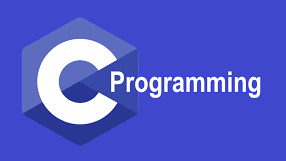Introduction
A procedural, general-purpose language that offers low-level access to system memory is C programming. To turn a C program into an executable that a computer can run, it must pass through a C compiler. C is a widely used programming language for Unix-based operating systems (OSes), and it is standardized as part of the Portable Operating System Interface (POSIX).
These days, Linux and Microsoft are just two of the many operating systems and hardware platforms that support the C programming language.
Basic C Syntax and Data Types
A popular general-purpose programming language for creating embedded systems, system software, and other applications is called C. It is renowned for being effective, portable, and adaptable.
Basic C Syntax
The basic syntax of a C program consists of the following parts:
- Header: Program details like preprocessor directives and libraries used by the program are contained in the header.
- Main function: The program’s entrance point serves as the primary function. That is the point at which the program starts to run.
- Variable declaration: Data is stored in variables. A variable must be defined with its data type and name specified before it may be utilized.
- Body: The statements that are run are located in the program’s body.
- Return type: The type of data that the application returns is specified by its return type.
Functions and Modular Programming
Two core ideas in C programming are functions and modular programming. Functions are independent coding units that carry out particular tasks. They can be used to divide a big issue into smaller, easier-to-manage chunks. A software design technique called modular programming places emphasis on breaking up a program’s functionality into independent, replaceable modules. The fundamental units of modular programming are functions.
A software design technique called modular programming places emphasis on breaking up a program’s functionality into independent, replaceable modules. Every module need to carry out a single function and be reusable across different applications.
The fundamental units of modular programming are functions. A complex program can be made easier to comprehend, maintain, and debug by dividing it into smaller, more manageable parts.
Advanced C Concepts
Beyond the fundamentals of the language, advanced C concepts include variables, data types, operators, and functions. C programs can be written with greater complexity and power by utilizing these ideas.
Advanced C concepts include, for instance:
- Pointers: Variables called pointers are used to hold other variables’ addresses. They can be used to directly access and modify data stored in memory.
- Dynamic memory allocation: Runtime memory allocation for variables and data structures is possible with dynamic memory allocation. Creating data structures that expand or contract in size as needed can benefit from this.
- Structures and unions: You can group together related data objects using compound data types like unions and structures. Complex data structures like linked lists, trees, and graphs can be made with them.
- Function pointers: Pointers to functions are known as function pointers. They can be used to generate callbacks or to send functions around as parameters to other functions.
Conclusion
From its introduction in the early 1970s, C has shown to be a robust and adaptable programming language. C is well-known for its low-level capabilities, simplicity, and efficiency. It has been a mainstay in software development, helping to create embedded systems, operating systems, and a plethora of applications. It is a useful option for system programming and development in a variety of sectors due to its portability and hardware interface capabilities. C is still a useful tool for programmers even if newer languages have more capabilities and are easier to use. Its significance in creating the framework for contemporary computers cannot be overstated.
